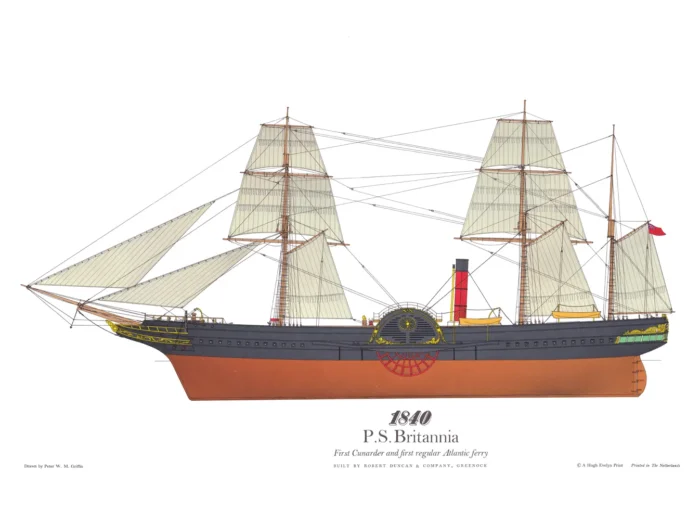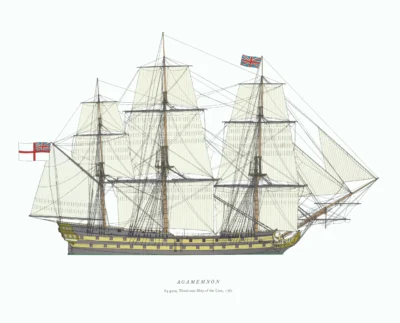RMS Britannia, 1840
£20.00
RMS Britannia: Cunard Steamship Company, Glasgow, Scotland (scroll down for a more detailed Description)
Print published 1968 by © Hugh Evelyn Limited; drawn by Peter W.M. Griffin.
Print size: c. 48 x 40 cm [19” x 14”] (size may vary slightly from printers’ cut 60 years ago)
Printed on heavy white cardstock c. 135 g/sm2.
Print is LARGE size – shipping is the same for 1 to 10 prints (based on largest print size in your order) – see Shipping & Returns
In stock
Description
Owner: British and North American Royal Mail Steam Packet Company [Cunard Steamship company], Glasgow, Scotland;
Builder: Robert Duncan & Company, Grenock, Scotland;
Launched and Maiden Voyage: 1840;
1150 GRTons; Leingth: 207 ft (67m) Beam: 35 ft (11 m)
RMS Britannia was an ocean liner of the British and North American Royal Mail Steam Packet Company, later Cunard Steamship Company. Launched on 5 February 1840 Robert Duncan & Co‘s yard in Greenock, Scotland. Britannia was a large ship for the period, 207 feet (63 m) long and 34 feet (10.3 m) across the beam, with three masts. She had paddle wheels and her two-cylinder side-lever engine (from Robert Napier) had a power output of about 740 indicated horsepower. She was relatively fast for the time: her usual speed was about 8.5 knots (16 km/h), but she could do better if the winds and currents were favourable. She had a tonnage, or carrying capacity, of 1,154 tons (by the Builder’s Old Measurement). She could carry 115 passengers with a crew of 82. In January 1842 Charles Dickens and his wife travelled to the United States on Britannia. The weather was bad, he was seasick for most of the voyage and returned home on a sailing ship. In March 1849 she was sold by Cunard to the revolutionary German Empire Navy and was renamed SMS Barbarossa. She had nine guns fitted and was the flagship of the Reichsflotte under Karl Rudolf Brommy in the Battle of Heligoland. In June 1852 she was transferred to the Prussian Navy and used as a barracks ship at Danzig. In May 1880 she was decommissioned from the Prussian Navy and in July 1880 she was sunk as a target ship.
Additional information
| Weight | 0.0235 kg |
|---|---|
| Dimensions | 48 × 34.5 cm |





